We have established a research group at Lehigh University focusing on assessment and enhancement of Community Resilience, Infrastructure Reliability, and Life-Cycle Sustainability. This is achieved advancing the state-of-the-art in Computational Mechanics, Probabilistic Modeling and Simulation, Operational Research, High Performance Computing and Big Data Analysis.
This page provides some examples of completed research efforts. Additional information is available at the pages dedicated to our publications and software.
Probabilistic life-cycle analysis of bridge structures considering Chloride ingress
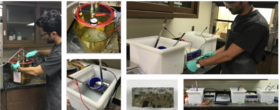
This project was funded by and completed in collaboration with the Pennsylvania Department of Transportation (PennDOT). The use of de-icing salt on bridges and the general exposure to chloride makes it difficult for bridge structures to reach their expected design life. PennDOT decided to conduct a multi-phase comprehensive study on this issue.
The first part of the project consisted in setting up a testing protocol for the accelerated measurement of the chloride migration coefficient in concrete. A testing apparatus was built, a data collection process devised, and a preliminary analysis performed on a set of selected concrete specimens used for bridge construction and maintenance in Pennsylvania. The study was integrated with a set of elemental mapping analyses to better understand the relative roles of cementitious matrix and aggregates in the migration process.
The second component of the project consisted in the development of a software package for the automated probabilistic life-cycle analysis of bridges, to determine the expected residual life and the probability of rebar corrosion initiation over time. The software was developed in Visual Basic, and it is distributed as part of an Excell spreadsheet (ProCAAT). This phase was completed with a training session for professional engineers and other PennDOT employees on the testing procedure, the use of the ProCAAT software package, and its theoretical foundation.
Finally, the testing protocol and the software for the life-cycle analysis were used to study all the concrete used by PennDOT for bridges over one year. For the duration of the experimental campaign, every PennDOT contractor had to send specimens of the concrete used to Lehigh University for testing and data processing. As a result, it was possible to perform a statistical analysis of the concrete in the state, and assess the benefit of various potential changes in the practice, such as the systematic use of epoxy coated reinforcement.
The project was a collaboration among the research teams of Dr. Naito (PI), Dr. Bocchini, and Dr. Fox.
Most representative publication:
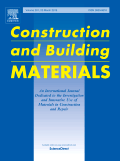
Clay J. Naito, John Fox, Paolo Bocchini, Mohanad Khazaali.
Chloride migration characteristics and reliability of reinforced concrete highway structures in Pennsylvania.
Construction and Building Materials, Elsevier, Vol. 231, p. 117045 1-14, 2020.
DOI: 10.1016/j.conbuildmat.2019.117045
Resilience Assessment and Enhancement for Transportation Networks
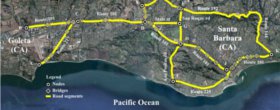
Resilience is the ability of a system to withstand external perturbations and rapidly recover to a satisfactory level of performance. In this line of research we develop computational techniques for the quantification of the resilience of transportation networks with respect to seismic events, addressing all phases of the recovery (immediate emergency, mid-term infrastructure recovery, and long-term socio-economic recovery).
The combination of probabilistic models with optimization techniques allows to use these results as decision support tools for the pre-event decision making on maintenance and retrofit, as well as on the post-event disaster management.
Most representative publication:
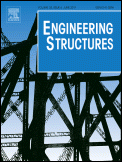
Aman Karamlou, Paolo Bocchini.
Sequencing algorithm with multiple-input genetic operators: application to disaster resilience.
Engineering Structures, Elsevier, Vol. 117, Issue C, p. 591 - 602, 2016.
DOI: 10.1016/j.engstruct.2016.03.038
Functional Quantization of Random Processes and Fields
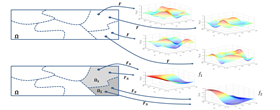
A significant amount of problems and applications in stochastic mechanics and civil engineering involve multi-dimensional random functions. The complexity of several of these problems requires to solve them by simulation, but this type of probabilistic analysis is usually computationally very expensive if a brute-force Monte Carlo method is used. Thus, a technique for the optimal selection of a moderate number of samples effectively representing the entire space of sample realizations is of paramount importance. Functional Quantization is a novel technique that has been proven to provide optimal approximations of random functions using a pre-determined number of representative samples. The methodology is very easy to implement and it has been shown to work effectively for stationary and non-stationary random functions.
The research group, in collaboration with Dr. Manuel Miranda (Hofstra University), has developed a technique for the quantization of random functions called Functional Quantization by Infinite-Dimensional Centroidal Voronoi Tessellation. This approach has been successfully applied to one- and multi-dimensional, Gaussian and non-Gaussian, stationary and non-stationary random processes and fields. The technique has been demonstrated on famous random processes, regional hazard maps, life-cycle deterioration functions, and random mechanical properties.
Most representative publication:
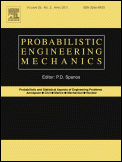
Vasileios Christou, Paolo Bocchini, Manuel J. Miranda.
Optimal representation of multi-dimensional random fields with a moderate number of samples: application to stochastic mechanics.
Probabilistic Engineering Mechanics, Elsevier, Vol. 44, special invitation-only issue on Computational Stochastic Mechanics, p. 53 - 65, 2016.
DOI: 10.1016/j.probengmech.2015.09.016
Structural Monitoring by Guided Ultrasonic Waves

Stress-guided waves are mechanical waves that travel along plates, pipes, or barlike structures (“waveguides”), probing their entire cross section. The behavior of traveling guided waves is characterized by dispersion curves and by wave structures. The dispersion curves show how the wave features, such as speed of propagation and attenuation, change with the frequency, whereas the wave structures represent how the wave displacement and some energy-related features, such as the strain and kinetic energy densities, are distributed over the waveguide cross section. A preliminary accurate computation of dispersion curves and wave structures is essential to design, perform, and interpret the results of any experimental or industrial guided wave-based application.
GUIGUW is a graphical user interface (GUI) for the computation of stress-guided wave dispersive features. The software exploits semianalytical finite-element (SAFE) formulations for the calculation of wave-propagation characteristics. The interface allows for the selection of geometrical, mechanical, and frequency-related parameters for the computation. Isotropic and anisotropic materials with linear elastic and linear viscoelastic rheological behaviors can be considered, and any waveguide cross section can be modeled. For each existing wave, the dispersive results can be represented in terms of wave number, wavelength, phase velocity, group velocity (for undamped waveguides), energy velocity, and attenuation (for damped waveguides). By simply working with the GUI, original results for guided stress waves can be obtained.
Most representative publication:
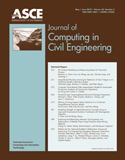
Paolo Bocchini, Alessandro Marzani, Erasmo Viola.
Graphical user interface for guided acoustic waves.
Journal of Computing in Civil Engineering, ASCE, Vol. 25, Issue 3, p. 202-210, 2011.
DOI: 10.1061/(ASCE)CP.1943-5487.0000081
Detection of Blockages in Large Pipeline Networks for Hydrocarbons

The presence of a blockage or multiple blockages lowers the efficiency and reliability of the pipe network. In the long term they may even cause structural damages. The early detection of blockages in pipelines and pipeline networks is thus an important issue, with a relevant economic impact on the oil and gas energy industry. Several techniques to locate and quantify the presence of blockages in a single pipe are available in the literature. However, when a long pipeline or a large network of pipes is considered, it is usually impractical to apply such techniques to each individual segment of the distribution network.
The research group, in collaboration with a team from the University of Bologna, addresses the problem of obtaining a preliminary identification of the pipe/pipes potentially interested by blockages at the network level, using only measurements that do not disrupt the normal operational conditions of the pipe system. In this way, further analyses can be conducted only on the pipes that have already been identified as likely to have blockages. The proposed technique is covered by an international patent and relies on two main numerical tools. The first one is a simulator of the steady state flow within the pipe network, which uses a modeling scheme inspired by the Finite Element method. The second tool is an optimization algorithm that identifies the potential obstructions (in terms of location and severity) minimizing the discrepancy between measured and simulated data. These two numerical tools are integrated in a framework that allows a simple data input and a clear interpretation of the results.
Most representative publication:
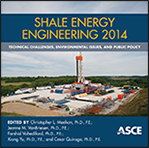
Paolo Bocchini, Alessandro Marzani, Aman Karamlou.
Blockage Detection in Pipeline Networks for Gas and Oil.
Shale Energy Engineering 2014: Technical Challenges, Environmental Issues, and Public Policy (C. L. Meehan, J. M. VanBriesen, F. Vahedifard, X. Yu, C. Quiroga eds.), ASCE, pp. 676-683, 2014.
DOI: 10.1061/9780784413654.068
Probabilistic Optimization Technology (POTech) applied to Weapon Systems
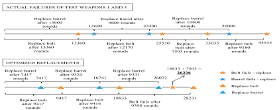
In order to accurately model any engineering system, it is necessary to consider the effect of uncertainties. The limitations encountered in deterministic modeling can be resolved by employing a probabilistic approach as well as introducing optimization procedures. These two tools guarantee rational and efficient assessment and design in terms of both performance and economics. The overall aim of this work is to develop an integrated framework for the application of probabilistic optimization technology to weapons. The systematic use of the POTech (probabilistic optimization technology) framework will lead to cost reduction in regards to the lifetime management of weapon systems. The project is performed by Lehigh University in collaboration with the Armament Research, Development, and Engineering Center (ARDEC) through the Pennsylvania Innovation and Advanced Technology Association (PIATA).
Most representative publication:
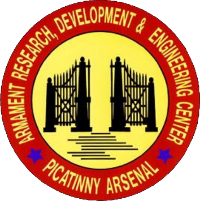
Dan M. Frangopol, Paolo Bocchini, Samantha Sabatino, Vasileios Christou, Stephanie Snipes.
Probabilistic Performance Assessment Based Upon Experimental Data and Optimal Planning of Maintenance on Weapon Systems.
Tehcnical Report, of the Armament Research, Development, and Engineering Center (ARDEC), submitted for review.